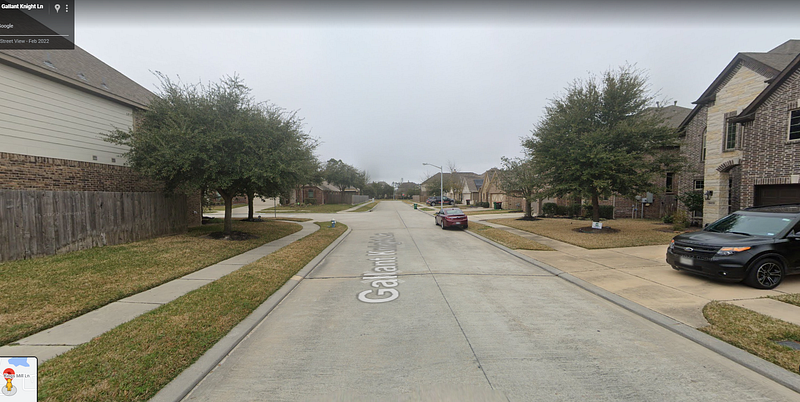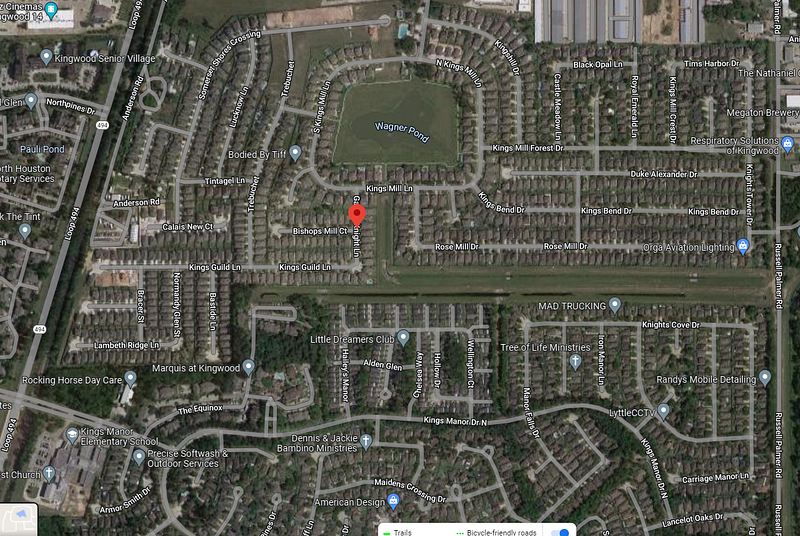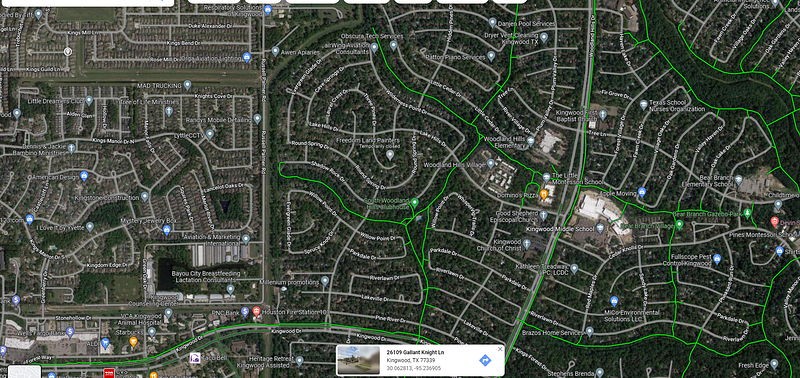Pedestrian and bike collisions are a policy failure
An 8 year old in Texas was struck and killed this week and police blamed the kid for “riding in an area that isn’t safe for pedestrians or…

An 8 year old in Texas was struck and killed this week and police blamed the kid for “riding in an area that isn’t safe for pedestrians or people riding bikes”
According to a KHOU report, an 8 year old child was riding his bike near his home in the Houston area when he was struck and killed by a driver. The media report said that police claimed the boy was riding in an area not safe for bicycling or pedestrians.
This detail jumped out to me when I first read initial reports on Twitter this week, so I decided to take a closer look at what happened here. You can see in the title image above and the following image below that the crash happened in a pretty standard residential neighborhood. The street is not a major thoroughfare and expensive looking newish construction line both sides of the street.

This neighborhood is, by all outward appearances, to be the American dream. The street is wide enough for two way traffic going either way, as well as street parking. There’s a wide median between home and street and a standard sidewalk lines both sides of the street.
The length of road where the crash took place is relatively short, and it’s puzzling that a driver would have been able to build up a lethal amount of speed before striking the child.
But a closer look at the layout of the street and neighborhood gives us clues as to how the crash happened. There are no bike lanes in this particular neighborhood, though there appears to have been room to build them if the developer so chose or the city required it.
The next development lot over features a wide network of bike lanes as seen below.

There’s no reason why this street couldn’t have been designed for children to safely bike on them. There could have been raised crosswalks at intersections to slow traffic. The wide shoulders on the road encourage drivers to ease up with their attention, as it feels more safe for drivers.
There’s certainly space to add separated bike lanes by cutting down on the shoulders’ grassy area. I’m not an engineer, just a transit and traffic safety nerd, but this crash appears to have been a policy decision.
When planners and developers can design neighborhoods for safe biking and walking, and choose not to, that’s a deliberate policy decision.
When cars were first invented, child pedestrian deaths immediately soared. Back then, streets belonged to people, not just drivers, and outrage from the death toll led to national newspaper political cartoons depicting drivers as the grim reaper, mowing down children out of selfishness.
It wasn’t until a few years later, when car makers, oil companies, and tire manufacturers realized that the negative press could kill their fledgling cash cow industry, when they banded together to brainwash the American people into blaming pedestrians for their own deaths.
They invented the term “jay walking.” Back then, “jay” was another word for hick or redneck, so the mass media campaign essentially portrayed pedestrians using streets as if a country bumpkin had never been to the big city before. The campaign worked.
It was so effective that here we are almost 100 years later and we have police blaming an 8 year old child for his own death-by-automobile simply because he wanted to ride his bike on his street.
This is the second in a monthly series on city planning and pedestrian and bike safety. If you appreciate this work, consider contributing to my Patreon. Patreon.com/katelynburns



